What does a website testimonial look like?
Many companies use customer testimonials on their website to provide social proof by way of demonstrating success. Testimonials come directly from customers and serve as an effective marketing method for several different reasons, which we’ll discuss.
A testimonial can include:
- Customer Quotes
- Customer Photos
- Video Testimonials
- Customer Experiences
- Case Studies
Testimonials can be very powerful for helping to establish trust and encouraging visitors to buy, sign up, fill out a form, or take whatever action you’re after. With more businesses and websites providing user reviews and testimonials, getting positive reviews is more important than ever. According to a study done by G2 Crowd and Heinz Marketing, greater than 92% of respondents said they are more likely to purchase a product or service if they’ve read a trusted positive review.
Statements from satisfied customers, whether it’s in the format of a review with a star rating or a simple quote or endorsement, can have a huge impact.
For websites and online businesses, testimonials can be even more useful than traditional businesses because visitors are often skeptical or hesitant to trust someone online. How do you know the person or company behind a website can be trusted? Many visitors feel that genuine endorsements from real people can help to build that trust.
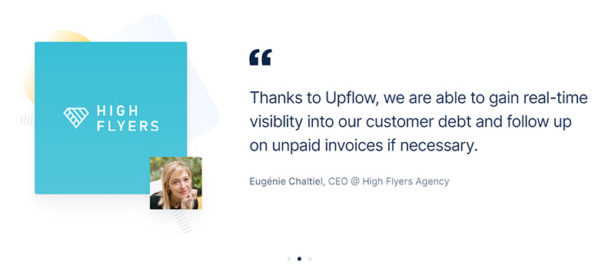

Website testimonials can be displayed in many different ways, and throughout this article, we’ll take a look at 25 real-world examples that will give you plenty of ideas and inspiration. Here you’ll find some that use video, photos of customers, quotes from reviews, and more. Some of them are presented in very basic ways and others are more creative or unique in terms of design or implementation.
What is a Testimonial?
A testimonial is essentially an endorsement or praise from a happy customer. It’s a statement that helps to verify your credibility by showing that real people have had a positive experience with your products or services or you as a business owner. Effective testimonials will help to encourage prospective customers to place their trust in you.
Some are very specific and get into the exact details from a satisfied customer, for example, increased sales or productivity. Others may be more general and simply express a positive experience with your company or trust in you.
Where Should Testimonials Be Placed on a Website?
If you’re convinced that you need to provide social proof from brands or customers, one of the next decisions you’ll face is where to place them.
Although testimonials are an important aspect of your site, they’re not usually placed front and center. Many businesses include text, video, or even audio endorsement lower on the homepage, below the fold.


This location makes sense because as a visitor scrolls down your homepage, the content of the page should be working to sell that person on your capabilities and what you can do for them. A positive statement from a customer or client then follows that up and reinforces or proves your point.
Some websites include a page dedicated to customer case studies. If you’re showcasing endorsement from a few customers on your homepage and you have more that you’d like to include, linking to a separate page may be the best option. This gives visitors a chance to dive in and read more if they want to without overwhelming them with too many endorsements on the homepage.
How to Use Testimonials on a Website
Now, let’s take a look at some tips and best practices you can follow. We’ll also include some real-world examples to demonstrate how websites in the wild are going about this.
Include Photos or Videos
Including a quote from a customer in text-based format can be helpful, but it often feels impersonal. Simply including a photo or headshot of the customer will be much more effective because visitors will be able to see that a real person is behind the quote.
If you want to take it a step further, including video is even better. Visitors can see and experience the statement in a more personal way, which helps to increase the authenticity and believability for the visitor.
Of course, any time you’re using a customer’s photo or video on your website (or other marketing materials), you should get explicit permission from the customer.
Marqeta‘s homepage includes two testimonials, including one from DoorDash that features a video. A short quote is shown on the site with a photo, the DoorDash logo, and a link to watch the video.


Aim for Variety
Ideally, your website will include endorsement from a few different people or brands. Try to get some variety rather than having all of the testimonials coming from people that are very similar. Your website visitors may relate to or connect with different types of people, so a lack of variety can hurt you if the visitor isn’t feeling a connection to the customers that are endorsing you. By including variety, you cast a wider net.
Asana‘s homepage includes testimonials from customers in a variety of different industries. Companies represented include Wix, Impact Justice, the PGA, Fireclay Tile, and others. If all of the featured customers were from the same industries, visitors might feel like Asana isn’t right for them if they’re not in the same industry. By including such a great variety, Asana shows that it can work for any business.


The testimonials are also displayed really nicely on Asana’s website. A large photo is included with each quote, and there’s a link to “meet our customers”. When you click on the link, you’re led to page that provides much more social proof through many different case studies.
Let the Customer/Client Be the Star
Although the purpose or goal is to validate your credibility or your capabilities, you don’t want the testimonials to be all about you. Instead, it’s ideal if it makes the customer the star and shows what they were able to achieve or accomplish thanks to your products or services.
Remember that visitors will be trying to evaluate what you can do for them. Testimonials and case studies that make the customer the star will lead the visitor to think about what he or she might be able to do with your product or service. They don’t really care about what you can do, they care about how it relates to themselves.
ConvertKit is an excellent example of this. Their homepage includes several customer profiles that include testimonials. These aren’t full case studies, but they showcase real ConvertKit users and what they’re accomplishing with the platform.
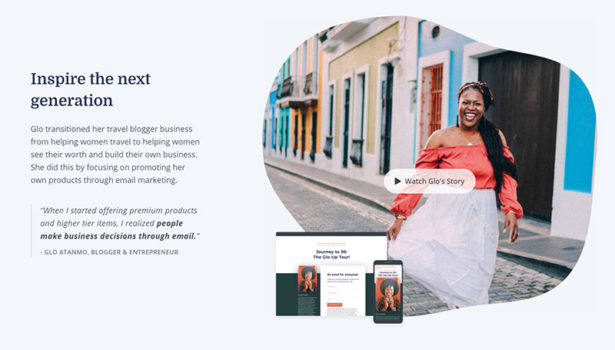

Each one includes a quality photo of the customer, a short description of what they’ve accomplished, a very brief testimonial, and then a link to a video that tells their story in much more detail.
The creation of these customer videos obviously goes way beyond what’s typically done with online testimonials, but the execution is perfect for proving just how ConvertKit can help customers.
Visitors will be able to feel a better connection with the person giving the testimonial, and hopefully they’ll relate and feel like they could accomplish something similar.
If you’ve helped your clients or customers to achieve amazing results, this type of approach can be extremely effective. The person giving the testimonial is the star because you’re sharing their story, but at the same time it’s also validating your credibility.
Include Stats (When Possible)
While it won’t always be possible, including specific numbers or statistics can be an effective approach. Simple positive statements and general endorsements are helpful, but statistics and numbers can be used to provide further proof.
Now, you won’t be writing the testimonials for customers or telling them what to say, but you might want to provide some potential talking points to customers who are interested and willing to provide a testimonial. You might want to do a little extra leg work to gather data that could be used for these statistics based on the customer’s experience.
Let Customers/Clients Use Their Own Words
Visitors need to be able to feel like quotes or endorsements are genuine and not fake. Allow customers to use their own words and say what they think rather than telling them what to say. Each testimonial should be unique and in the voice of that particular customer. Prospects can tell when reviews seem off or fake.
Web hosting provider BigScoots includes video testimonials on their homepage. Unlike some other examples that you’ll see in this article, these are not polished professionally-created videos. Instead, they’re simple smartphone videos from real BigScoots customers. Although professionally-created videos may look nicer, these videos are very genuine because they feature the raw comments from customers, in their own words.
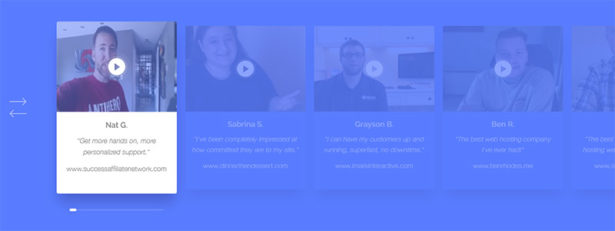

Showcase Them Prominently
While testimonials won’t be the first thing visitors see when they visit your website, you do want to make sure that they’re seen. They shouldn’t be buried someplace or else they won’t be effective.
Think about the location and how it makes sense in the flow of your site or landing page’s content.
Flux Academy includes a few video testimonials just below the fold on their homepage. The videos showcase the stories of specific students, providing proof of the effectiveness of the training offered by Flux Academy. Visitors will see these success stories and feel like they can succeed as well.
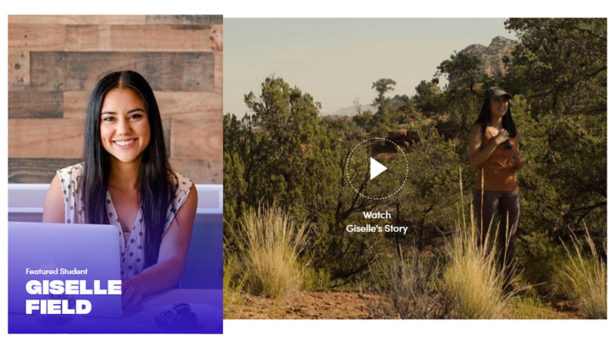

Include Several Testimonials
Most companies and websites include at least a few. A single endorsement can be helpful, but several of them are likely to be more helpful. There is power in numbers and showing the support of multiple previous or current customers will help to provide more credibility.
Get Testimonials from People Your Audience Will Recognize
While testimonials are helpful in general, they’re even more powerful when they come from someone influential. It may not always be possible, but if you’re able to get a testimonial or recommendation from someone who will be well-known to your target audience, that could be huge for your business.
Fusebox is a podcast player, so their target audience is podcasters. Almost every podcaster is going to know who John Lee Dumas is, and his recommendation carries a lot of weight.
The Fusebox homepage features a few different testimonials in a carousel, and the first one is from John Lee Dumas. There’s a nice photo included to mae it hard for visitors to miss.
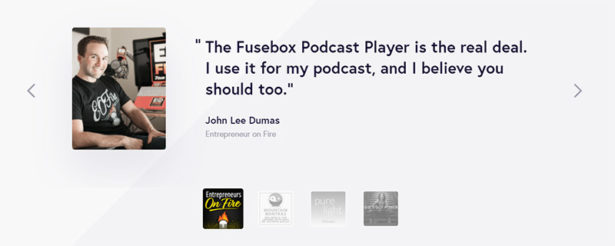

Include Familiar Logos
If you have an endorsement from a company that people in your target audience will recognize, include their logo (with permission). Visitors will see and recognize a logo faster than they’ll read the words, and the visual impact of having recognized company logos can be very powerful.
Showcase of Testimonials
We’ve already looked at several examples throughout the article, but here we’ll showcase some additional examples to provide more inspiration.
Circle
Circle includes a few different types of testimonials on their homepage, and they’re extremely well done. They have a few video testimonials (with a short quote in text format as well) from recognizable people like Pat Flynn of Smart Passive Income.
The screenshot below shows a creative way that Circle has incorporated a testimonial into a call-to-action. The quote and photo of a customer is placed directly above the button to start a free trial.
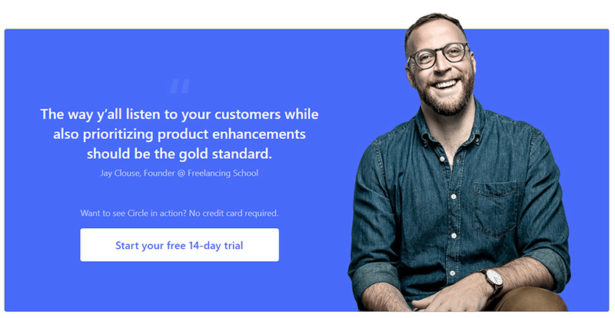

AWeber
Email marketing provider AWeber includes a well-designed testimonial on their homepage. As you scroll the page, the testimonial really stands out visually. It’s just a short one-sentence testimonial, but it links to a “Success Stories” page. Here you’ll find more testimonials and some examples of what customers have been accomplishing with the help of AWeber.
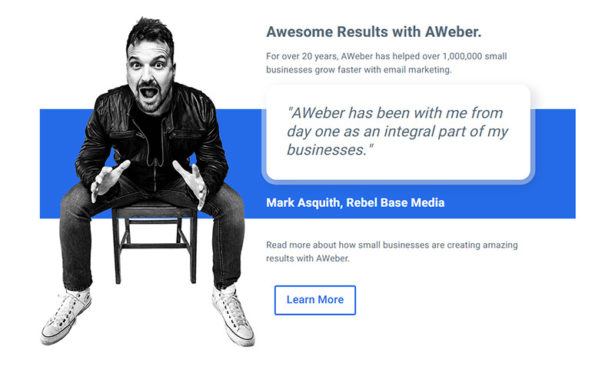

WP Engine
Web host WP Engine doesn’t include typical testimonials with quotes from customers on its homepage, but it does showcase and link out to pages with detailed case studies.
The WP Engine homepage showcases four different companies that use their hosting services. Each one includes a photo, a brief statement about their experience or what WP Engine has helped them to accomplish, and a link to a detailed case study.
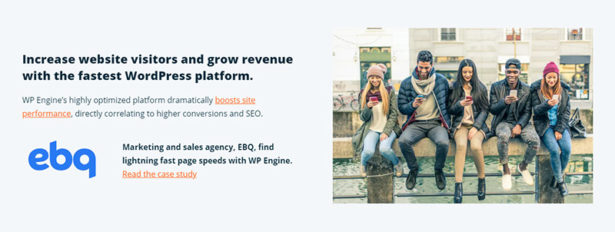

Shopify
Shopify’s homepage features a testimonial with a large photo, brief quote, and a link to a video that shares the story of the customer. The video is really well done and does a great job of communicating what’s possible with the help of Shopify.
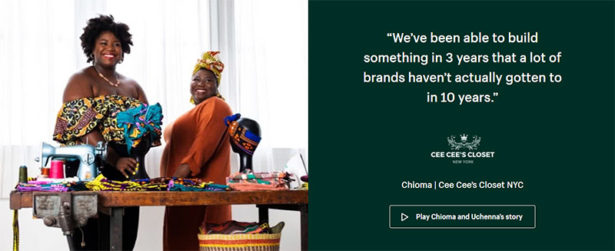

BigCommerce
The BigCommerce homepage includes a testimonial near the bottom of the page. It includes a brief quote, a photo, a link to a video of the customer’s story, and a link to a text version of their case study, including some impressive stats. The case study shows a 30% increase in conversion rate in just two months with BigCommerce.
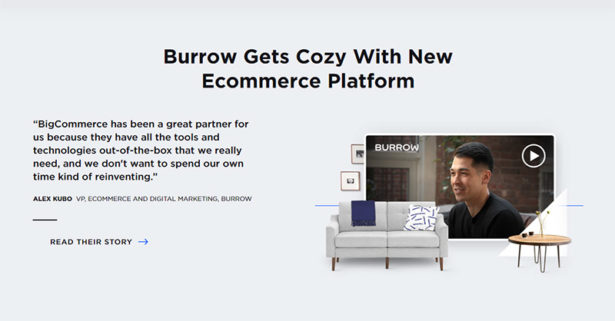

Vecteezy
Vecteezy’s contributor page includes quotes from three contributors who are making money on the platform. They’re displayed in a colorful way that fits very well with Vecteezy’s branding, and the quotes also allow each contributor to share how he or she is being impacted by being able to make money with Vecteezy.


InVision
As you scroll down the InVision homepage, you’ll see a few testimonials. While the execution is fairly simple, it’s very effective and fits well within the design of the page. There is a short quote, photo, and logo. InVision has been able to get testimonials from people at major companies like Visa and Intuit, which helps to add credibility.
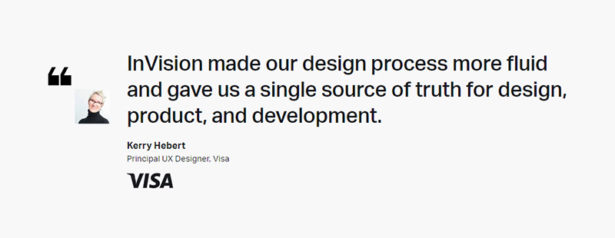

Omnisend
Omisend’s homepage includes several customer testimonials near the bottom of the site’s homepage. They are displayed in a carousel so visitors can scroll through them easily. Each testimonial includes a large professional-quality photo of the customer, along with their company and title, and a few sentences of text.


Tailwind CSS
If you’re looking for creative implementation, you really need to visit the Tailwind CSS website to see their testimonials in action. The site uses animation to change the size and layout of the testimonial, as an example of the functionality that exists with the framework.
The testimonial is simple text with a thumbnail photo, but it’s a powerful part of the website because it serves as a demo as well. Tailwind CSS recognizes the importance and value of the testimonial and they’ve placed it higher on the homepage than you’ll typically see testimonials.


Your Sales Engine
Testimonials on the homepage of Your Sales Engine are presented in a very visually-pleasing way. There are quotes from a few different customers that are displayed via a carousel. Each one includes a quote from a customer and a large photo. The text is presented in a large italic font and the style fits well within the rest of the design.
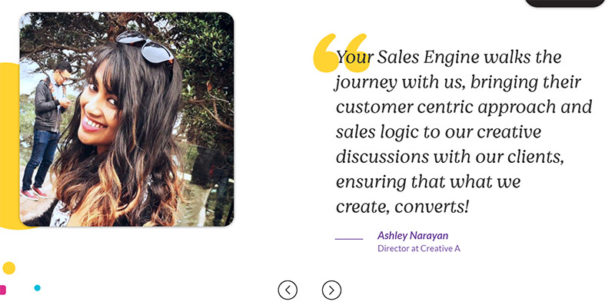

BYLT
BYLT includes a short customer quote in way that fits very well within the design of their homepage. It features nothing more than a photo of the customer and a one-sentence quote.


Ludus
Ludus uses tweets as testimonials on their homepage. These brief testimonials include the avatar of each person and a link to the actual tweet. If people are talking about you on Twitter or in social media posts, this may be an easy way to pick up a few testimonials.


Your Next Agency
Your Next Agency displays testimonials in a similar way, but these are not from tweets. Just like with Ludus’s website, you can click the arrows to scroll through the many customer testimonials.


Deskpass
Deskpass’s homepage features three customer testimonials that can be viewed via a carousel. Each one includes a one-paragraph quote and a large photo.
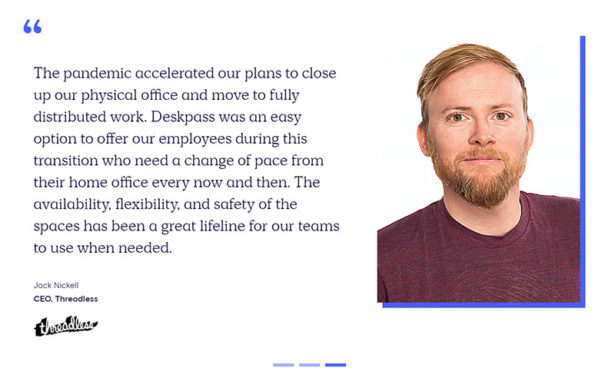

Upflow
Upflow uses testimonials that are displayed in a well-designed carousel. Each one features a quote from a customer, a small photo, and their logo on a colorful box.


Printbox
Printbox’s homepage includes six different customer testimonials that can be viewed one at a time. Each one includes a thumbnail photo of the customer, a screenshot of their website, a quote that includes about a paragraph of text.
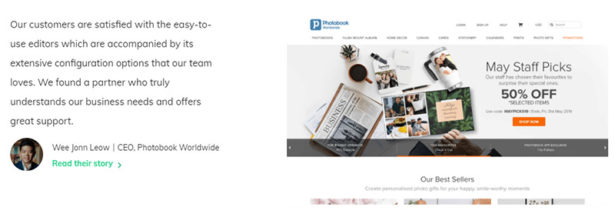

Luck Paws
The Lucky Paws homepage includes a few reviews from users. They display five-stars next to each one for further social proof.


Linksture
Linksture includes some simple text-based testimonials near the bottom of their homepage. If you’re looking for a simple way to incorporate testimonials, this could be a good example (although I think it would be more effective if they included a photo and logo or the name of the company).


Visme
The design and visual aspect of the testimonials at Visme is nothing to get excited about, but they’re doing a few specific things really well: 1) They have testimonials that feature recognizable logos (especially IBM), and 2) They include many testimonials, giving visitors proof that lots of customers are happy with Visme.


How to Get Testimonials for Your Website
While you may get some testimonials without any prompting, it helps to be proactive. If you know you’ve gotten positive results or done something special for a client or customer, reach out and see if they would be willing to provide a quote or even create a video.
Aside from singling out specific customers, you can also seek general feedback from all customers through an automated email that gets sent out at a certain time after a purchase. Ask customers to share their thoughts. If you get one that would make a great testimonial, reach out and ask for permission to use it on your website.
Frequently Asked Questions About Testimonials
What is a Testimonial On a Website?
A testimonial is an endorsement, recommendation, or statement by someone who is sharing a positive experience with a business or product. Many businesses choose to publish customer testimonials on their website because it helps to provide social proof to others who may be visiting the site.
Do I Need Testimonials On My Website?
If you sell a product or offer a service, you should include at least a few real testimonials for clients or customers. If you’re just getting started and you don’t have any testimonials yet, you can take on some projects specifically for the purpose of getting testimonials. Another option is to get a personal endorsement rather than a testimonial for a specific product or service.
What Should Testimonials Include?
Testimonials can include anything about the customer’s experience. It could be a general statement of support or explanation of a positive experience, or it could get specific with details that show why a customer is happy.
How Many Testimonials Should Be Included on a Website?
Most websites that display testimonials will include at least three. Having just one or two may look like you’re sharing the only positive experience from a customer. At the same time, you don’t want to include too many that it takes over the website. If you have a large number, consider starting a separate page specifically for these quotes or case studies and then link to the page from your homepage or other sections of your site.
Can You Pay for Testimonials?
No, paying for testimonials could be considered fraud or manipulative. Keep it genuine and only accept those that are offered at no cost from real customers.
Is It Illegal to Fake Testimonials?
Yes, it is illegal to publish fake reviews or testimonials. The FTC has the power to penalize anyone doing this, and they have taken legal action in the past.
Do I Need Permission to Publish Testimonials On My Website?
If you are using the customer’s name and/or photo with the testimonial, you will need to get permission before publishing. These types of testimonials are more powerful because they seem more genuine, so it is worth a small amount of extra effort to get permission.
For more design inspiration please see:




